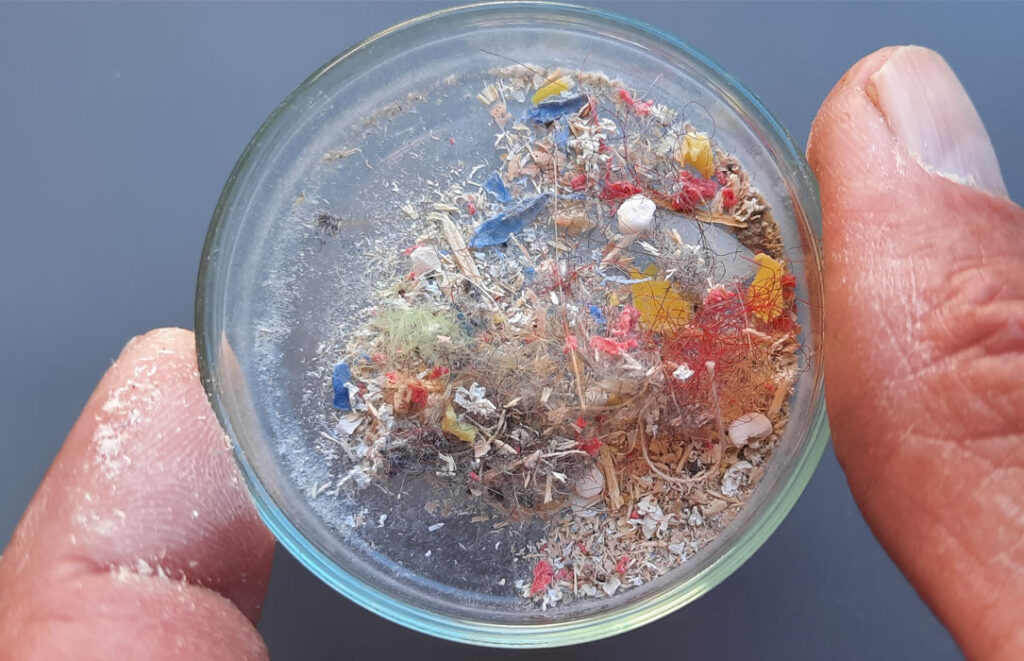
How Microplastics Sneak into Your Brain Microplastics, tiny plastic particles less than 5 millimeters in size, are ubiquitous environmental pollutants that have raised concerns due to their potential health effects. Recent research has shed light on the alarming ability of microplastics to cross the blood-brain barrier (BBB), the protective shield that safeguards the brain from harmful substances. The Blood-Brain Barrier The BBB is a highly selective gatekeeper that regulates the transport of substances into the brain. It consists of tightly joined endothelial cells, specialized astrocytes, and pericytes, which work together to maintain the brain’s homeostasis. Mechanisms of Microplastic Penetration Microplastics can breach the BBB through several mechanisms: * Passive Diffusion: Smaller microplastics (less than 0.1 micrometers) can passively diffuse through the gaps between endothelial cells. * Adsorption-Mediated Transcytosis: Microplastics can adsorb to plasma proteins and be transported across the BBB by transcytosis, a process by which substances are carried through cells by vesicles. * Trojan Horse Effect: Microplastics can hitch a ride on macrophages, immune cells that patrol the BBB, and be taken up into the brain. Consequences of Microplastic Invasion Once in the brain, microplastics can induce a range of adverse effects: * Neuroinflammation: Microplastics can trigger inflammation in the brain, leading to the release of cytokines and other inflammatory mediators. * Oxidative Stress: Microplastics can generate reactive oxygen species (ROS), which can damage brain cells and impair cognitive function. * Neurotoxicity: Some microplastics, such as polystyrene, have been shown to be directly toxic to neurons, causing cell death. Sources of Microplastic Exposure Microplastics are prevalent in the environment from various sources, including: * Plastic packaging * Synthetic clothing fibers * Cosmetics and personal care products * Food and water Preventing Microplastic Intake Reducing microplastic intake is essential to protect brain health. Here are some tips: * Avoid single-use plastics * Choose natural and sustainable products * Use a water filter certified to remove microplastics * Wear natural fiber clothing Conclusion Microplastic penetration into the brain is a serious concern that requires urgent attention. By understanding the mechanisms of entry and potential consequences, we can take steps to limit our exposure to these harmful pollutants and safeguard our cognitive health. Further research is needed to fully elucidate the long-term effects of microplastic exposure on the brain and to develop effective mitigation strategies.Microplastics Found to Invade Organs, Potentially Harming Human HealthMicroplastics Found to Invade Organs, Potentially Harming Human Health By Nicole San Roman, University of New Mexico Health Sciences Center Researchers at the University of New Mexico have made a concerning discovery: microplastics, tiny plastic particles that have become ubiquitous in our environment, can travel from the intestines to tissues such as the liver, kidneys, and brain, potentially causing significant health problems. Ingestion and Internal Effects Researchers estimate that people ingest an average of 5 grams of microplastic particles per week, equivalent to the weight of a credit card. While other scientists have focused on identifying and quantifying ingested microplastics, a team led by Dr. Eliseo Castillo at UNM is investigating their impact on the body, particularly the digestive tract and immune system. Experimental Studies and Findings In a four-week study, mice exposed to microplastics in their drinking water showed that the particles had migrated from the intestines to the tissues of the liver, kidneys, and even the brain. The exposure also altered metabolic pathways in the affected tissues. Concerns and Future Research These findings raise concerns about the accumulation of microplastics in the human body and the potential health consequences. Castillo notes that the study’s exposure period was short compared to a human lifespan, highlighting the need for further research on long-term effects. Impact on the Immune System and Chronic Conditions Castillo has previously discovered that microplastics affect macrophages, immune cells that protect the body against foreign particles. Exposure to microplastics alters macrophage function, promoting inflammation and potentially exacerbating underlying chronic conditions such as ulcerative colitis and Crohn’s disease. The Role of Diet in Microplastic Absorption The next phase of Castillo’s research will investigate the role of diet in the absorption of microplastics. Different diets may influence the body’s ability to take in these particles, potentially mitigating or exacerbating their effects. Future Directions and Social Impact Castillo’s research aims to reveal the potential impact of microplastics on human health and drive changes in plastic production and filtration practices. Understanding the risks associated with microplastic exposure is crucial for safeguarding public health and protecting the environment.
Microplastics Invade the Brain Tiny plastic particles known as microplastics are now being detected in the human brain, raising concerns about potential health risks. Microplastics originate from various sources, including plastic bottles, bags, and clothing. They can enter the body through inhalation, ingestion, or absorption through the skin. Once in the body, microplastics have been found to cross the blood-brain barrier, which protects the brain from harmful substances. Studies in animals have shown that microplastics can accumulate in brain tissue and trigger inflammation, oxidative stress, and neurotoxicity. In humans, it remains unclear what effects microplastic exposure has on brain health. However, some scientists fear that prolonged exposure could increase the risk of neurological disorders such as Alzheimer’s disease and Parkinson’s disease. Researchers are investigating the potential health impacts of microplastics in the brain. More studies are needed to determine the extent of the problem and develop strategies to mitigate the risks. Meanwhile, it is recommended to reduce exposure to microplastics by using reusable items, avoiding single-use plastics, and properly disposing of plastic waste.
Posted inNews